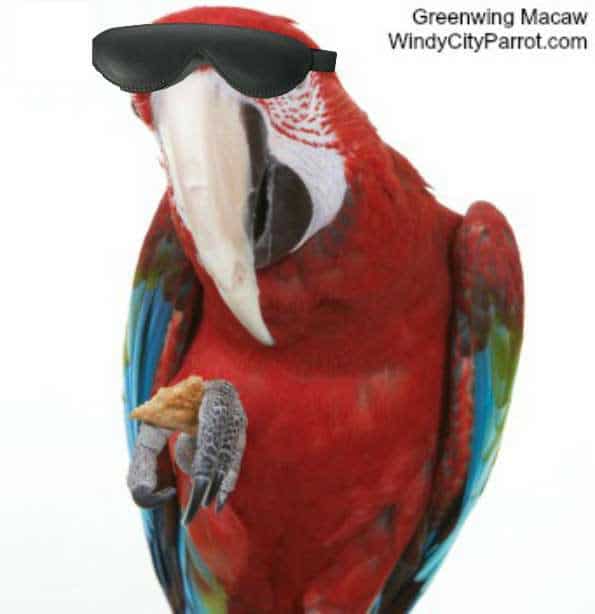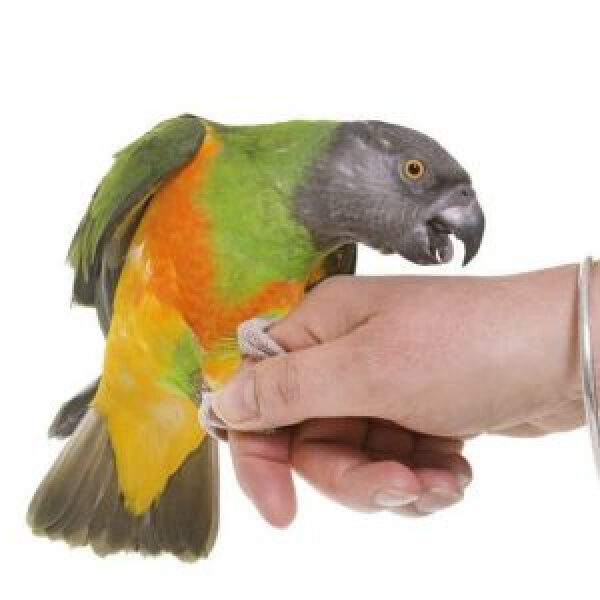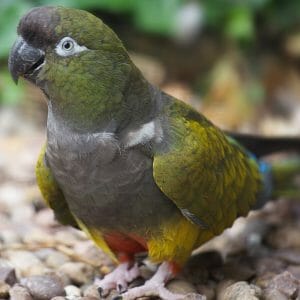Last Updated on by Mitch Rezman
LOL – Sunday I put my female DYH Amazon in the sink. she never preens herself like most birds do! I don’t know why! She is healthy, so??? Anyway, she was looking a little rough around the edges so I gave her a bath in the kitchen sink! She deals with it but it isn’t at the top her list of fun things to do!
The comment above was about the image below posted in parts of the black hole of internet known as social media.
that’s Popcorn our cockatiel who uses her tail
to dust the crown molding just below our 10 foot ceilings
…and loves to bathe
My response was: Amazons lack preening glands thus can not apply preen oil to their feathers. Since Amazon parrots lack preening glands and do not preen after bathing, the function of their bathing behavior is not entirely clear. – hope that helps.
That’s when the blog bulb turned on over my head and one of the several voices who wasn’t arguing with the other voices in my head whispered “maybe we should grow our knowledge base on preening?” This is what team brain came up with.
Most birds have a uropygial gland (click to hear the pronunciation) aka oil or preen gland found at the end of the tail and it comes in all sorts of shapes and sizes. In some birds nature provides tiny feathers to act as a wick for the oil emulating from pores in the central cavity of the gland. More commonly the secreted oil flows to the surface of the gland in ducts then being extracted by the bird through nipple like orifices.
Of course “most” birds means not all birds. The bird species we found that don’t have preening glands are kiwis, emu, ostriches, rheas, cassowaries, mesites, bustards, pigeons and doves, frogmouths, woodpeckers and as we learned early on in this post Amazon parrots have no preening glands either!
feathered factoid: cassowaries are known to have killed people
these handlers prefer 1 ton crocodiles to cassowaries
It’s no wonder that Amazons don’t bother to preen after bathing. So whats a uropygial glandless bird to do? There are alternatives to water bathing like dust baths and something we talked about recently – birds bathing with ants!
hey kids if you’re reading this tell your mom
mitch said its okay to play in the dirt – it’ll make you cleaner
In that the oil these glands produce what is the WD-40 (abbreviated from the phrase “Water Displacement, 40th formula”) of the bird world, it waterproofs feathers and helps make birds sexy to other birds. The oil helps keep feathers flexible and the tiny barbs found on many feathers, from breaking.
Feather barbules act like magic zippers for water birds sealing out water. On some birds it’s believed the oil is used much like you and I apply hand and body lotion to our appendages. Birds like the Hoopoe use the oil from the gland as a parasitic (lice) and bacterial barrier.
Another theory is that the oil contains the basis of what can become vitamin D through exposure to sunlight. Somehow the birds body knows the oil has been converted into vitamin D which is then “allowed” to be absorbed through the bird’s skin.
It has been postulated that similar to motor oil (think 5W20 multi viscosity motor oil) preening oil will get thicker and thinner based upon how intense a bird wants make its feather colors for courtship but this has not been proven. Another theory is that the uropygial gland produces pheromones to help attract mates. And what is this miracle potion made of you ask? It’s a combination of waxes, fats and fatty acids.
Begin micro rant: if you call us to have a discussion about wanting to get a full spectrum light to help your bird produce more vitamin D be prepared to answer the following question: “has your bird been to the vet lately and gotten the blood workup with results indicating that your bird is in fact vitamin D deficient?”
We don’t want to sell you something while making you a promise that the full spectrum light will fix a problem you are not sure you even have.
I bring this up because of the size of the Uropygial gland may increase in size because of a internal abnormal growth. This MAY occur when your bird has a vitamin A deficiency due to a 100% fatty all seed diet with no supplementation. This can be fixed with a veterinarian removing the growth and you putting your bird on a more nutritious diet.
now you know.
It used to be so easy – you would have a simple cable show and would say something like “this Macaw owner wrote in with the following question” holding up an index card (remember those?). Or “the next caller from Butte Montana asks……..”
But big shot celebrity like I am now with a media empire where the sun never sets sometimes forgets where some of these questions come from. Is the “Internet” a sufficient answer? Anyhoo, this question popped up on my radar and I thought it would be fun to investigate.
Is it true macaws don’t have taste buds? Are their preferences strictly based on texture?
I like whiskey. My favorite is Jameson’s Irish whiskey. I have a discerning palate and can easily distinguish between Canadian whiskeys, Scotch whiskeys, American whiskeys and Irish whiskeys. So I’ve sent resumes to every whiskey distillery I can think of. Apparently drinking a lot of whiskey does not count for experience when applying for the head whiskey tasters position.
My ability to discern these flavors is due to that much like you, I have about 9000 taste buds. Your parrot on the other hand only has about 350 taste buds. One of the problems parrots have with their sense of taste is their taste buds were allocated by nature to the wrong part of their digestive tract being on the back of the throat (oops too late to decide if I like it?) as well as their tongues.
This doesn’t stop them from being able to distinguish between salt, sweet, sour and bitter. Their ability to taste bitter helps them avoid poisonous substances in the wild. Out of the 10,000 species of birds blanketing the planet only a few (hundred) species like parrots and hummingbirds can taste sweetness.
Macaw parrots come from a very inhospitable environment called the rain forest (a large but shrinking area in much of South America where Macaws come from – there are also rain forests in Asia, Africa & Australia). Food although plentiful is not easy to get and requires Macaws (and other species) to fly dozens of miles every day with as many as 50 or more stops for a potty break and “foraging opportunities.”
Evolution made Macaw tongues short and muscular and they have more taste buds than any bird we know. They also have a very muscular gizzard (see video below) which helps with the breakdown of some tough vegetables that you won’t find at your local supermarket.
The millennial’s can pontificate all day long about the wonderful selection of organic produce at Whole Foods (don’t get me started on organic). Being the big picture kinda guy that I am I like to point out that although we use more than 200 types of fruit from the rain forest like avocados, coconuts, figs, oranges, lemons, grapefruit, bananas, guavas, pineapples, mangos and tomatoes; vegetables including corn, potatoes, rice, winter squash and yams; spices like black pepper, cayenne, cinnamon, cloves, ginger, sugar cane, tumeric, vanilla and nuts including Brazil nuts and cashews – all of which are birds love, it (the rain forest) actually produces about 3000 different fruits! The remaining Indians who still dwell in the rain forest eat over 2000 of these fruits.
Something our birds know that many of us might not is that Rain Forest plants are rich in secondary metabolites, particularly alkaloids, many of which have proven to have medicinal benefits. Currently, over 120 drugs come from plant-derived sources. Of the 3000 plants identified by the US National Cancer Institute as active against cancer cells, 70% come from rain forests. Yes Virginia your Macaw instinctively knows this, so we can confirm for you that your Macaw is in fact smarter than your neighbor’s honor student.
Caveat: Many people have the belief that all the parrots who visit the clay licks in Peru do so to ingest the clay for counteracting toxic foods they may accidentally eat. Turns out they visit the licks for the salt. How do we know that? Science – and who can argue with science? Enjoy the video – The explanation about salt comes in at about 4:58, but if you haven’t seen this video you want to watch the whole thing. Watching the macaws flying in slow motion always gives me goosebumps.
micro rant ahead >> “my bird won’t eat anything new”, “I don’t want to upset my bird by changing its diet”, “my bird won’t eat anything unless it looks like a sunflower seed”, “the breeder said the only way this bird will survive is to eat – fill in the blank – food”
Just some of the googly-logic we hear when we put our ears next to our computer monitors. I’m not here to tell you what your bird will eat and or what your bird will like. I will tell you in the wild birds are scavengers and will eat anything! At the end of the day the equilibrium you are seeking is to provide your bird with as many calories as it is burning.
Your bird’s body is covered in feathers. Unlike humans who feel that Speedo’s, microfiber leggings and that halter top you’ve had from the 80s are body fat indicators, you’ll never be able to tell if your bird is over weight and is on a diet that matches its lifestyle, without weighing the gosh darn thing at least once a month!
You and your family are your bird’s flock. Your bird usually wants to eat what you eat which for you is usually not bird seed. It’s okay to work on getting your bird to eat fresh vegetables and fruits, but it’s important that you’re asking the question – is my bird getting enough protein and a nutritionally balanced diet?
If you’re going to bother to spend the time, money and energy to keep a caged bird captive, tt’s important that you schedule least one annual board-certified avian veterinarian visit a year. Be prepared to spend anywhere from $100-$300 to get a blood workup.
By doing so you will make me less crazy by not calling me and asking me how full spectrum lighting will help your bird synthesize vitamin D? With the full avian blood workup you’ll know whether or not your bird is vitamin A and vitamin D deficient or not.
I won’t have to spend time with you on the phone explaining how your parrot instinctively expects blazing equatorial daylight and is finding the muted soffit lighting you saw in a Better Homes & Gardens How to article (now in your family room), a bit of a disappointment with how it interprets the world.
If you spend 30 seconds once a month weighing your bird, you’ll know in a heartbeat if your bird requires any sort of veterinarian intervention. Parrots in the wild abide by the 60/40 rule. They spent 60% of the time seeking food and 40% of the time trying not to be food.
A bird that looks sick is a target, so nature gave birds the ability to disguise most illness by always appearing to be healthy. If your bird is overweight you won’t know unless you weigh it regularly. You can find average bird weights here. If your bird has significant change in weight from a previous weigh in, you are looking at a low-tech but very accurate indicator that your bird is probably sick and requires a Board-certified avian veterinarian visit.
Like Ellen the very attractive but annoying dental assistant I used to visit in a previous life would repeatedly say “The mouth is a gateway to your body’s health” would do well to speak with some of the caged bird keepers we know.
written by mitch rezman
approved by catherine tobsing
Does that Macaw look happy or what?
written by mitch rezman
approved by catherine tobsing
Does that Macaw look happy or what?
Author Profile
Latest entries
 The Traveling BirdJune 26, 2025Can You Name 5 Parrot Species That Are Living Wild in the USA?
The Traveling BirdJune 26, 2025Can You Name 5 Parrot Species That Are Living Wild in the USA? Bird BehaviorJune 26, 2025How is it Parrots Are Problem Solvers Social Animals and Even Use Tools?
Bird BehaviorJune 26, 2025How is it Parrots Are Problem Solvers Social Animals and Even Use Tools? Bird & Parrot AnatomyJune 25, 2025How a Tiny Chemical Modification Makes Parrots Nature’s Living Paintings
Bird & Parrot AnatomyJune 25, 2025How a Tiny Chemical Modification Makes Parrots Nature’s Living Paintings PigeonsJune 20, 2025How Do Parrots Thrive in Cities Outside Their Native Habitats?
PigeonsJune 20, 2025How Do Parrots Thrive in Cities Outside Their Native Habitats?




